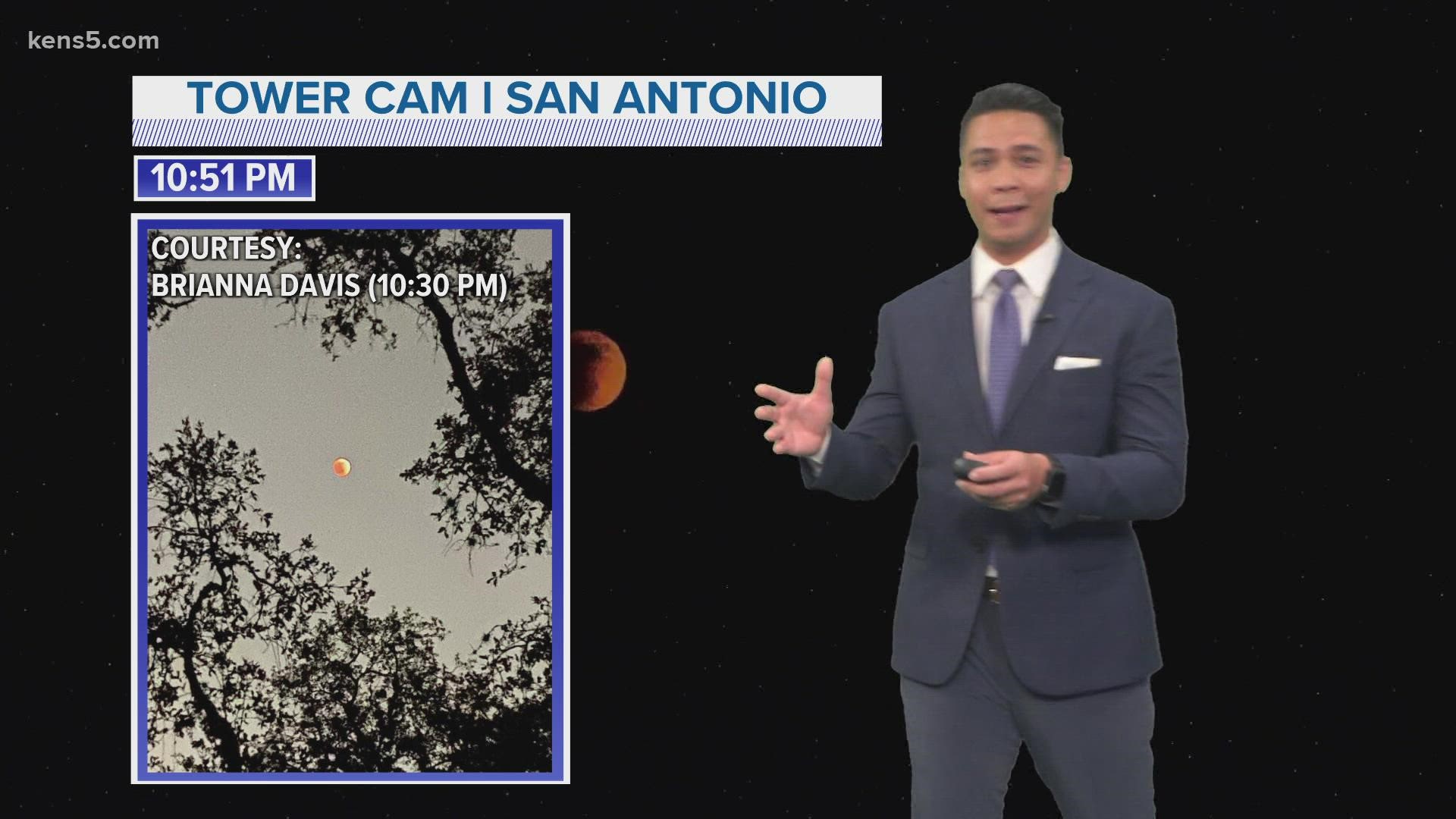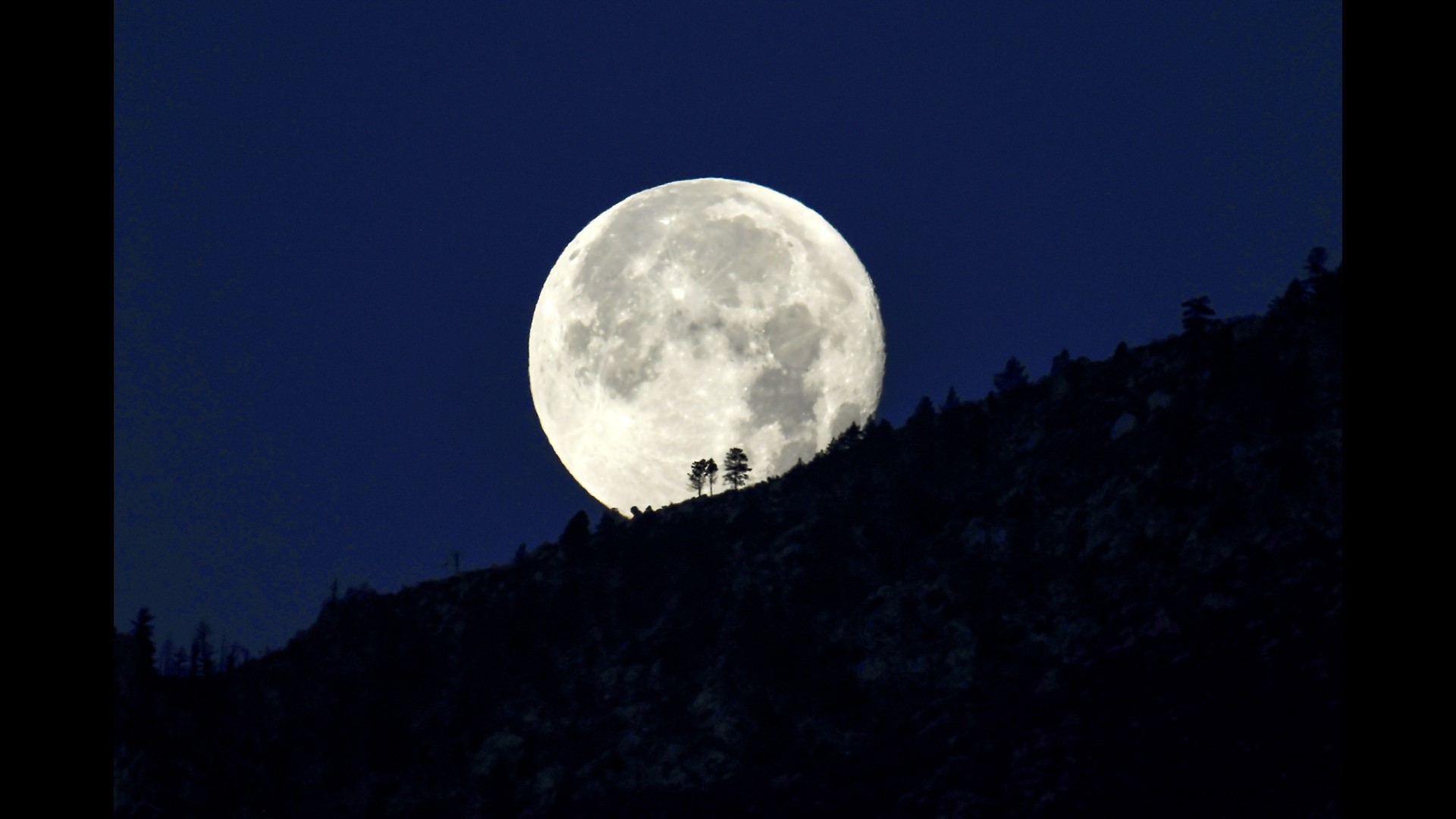SAN ANTONIO — San Antonians got a great view of a total lunar eclipse on Sunday night, turning the moon red!
Viewers from across the area sent in photos of the rare celestial event.

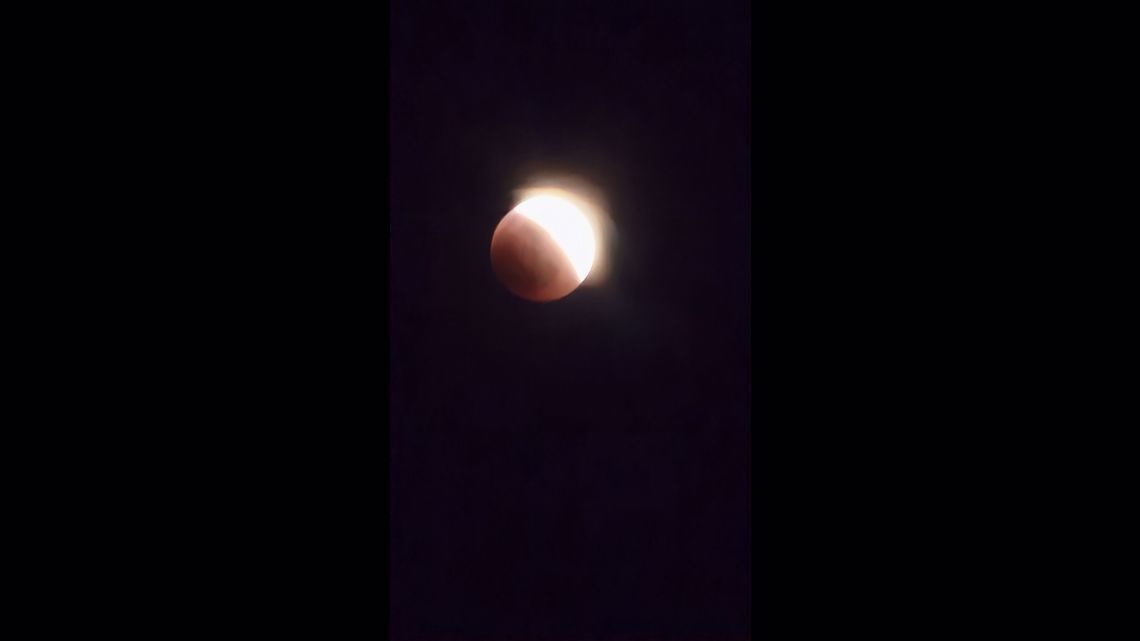

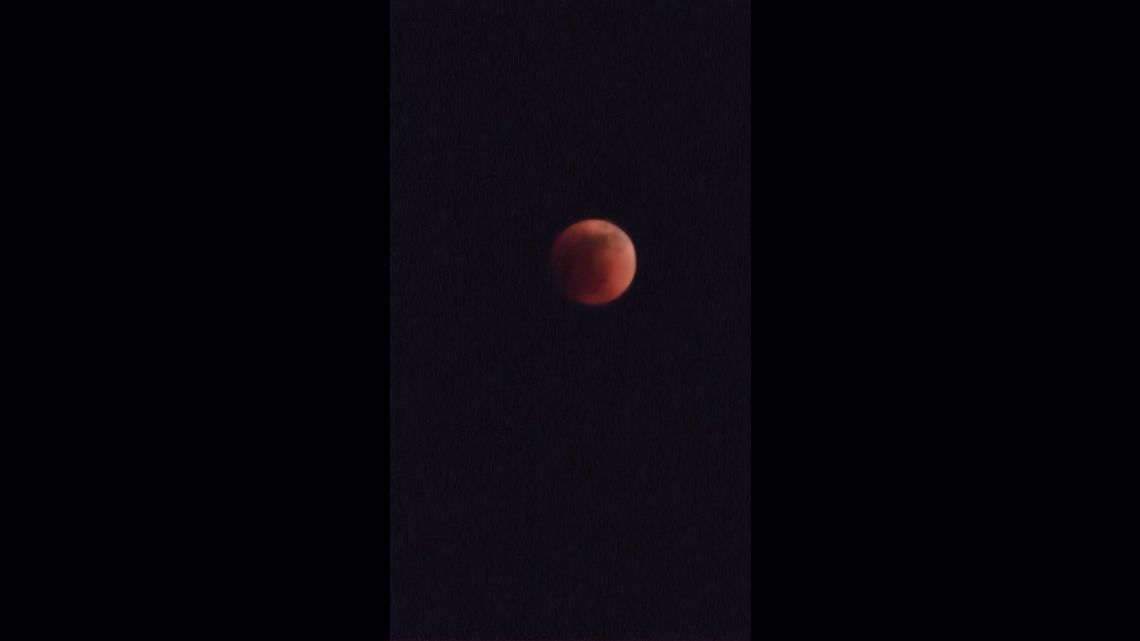
Here's everything to know before you go (forecast included):
There are three different types of lunar eclipses. Back in November, San Antonians had the chance to experience a partial lunar eclipse, but cloud cover obstructed some views. On Sunday night, a full lunar eclipse is expected, and skies should be mostly clear in San Antonio around the time of maximum eclipse.

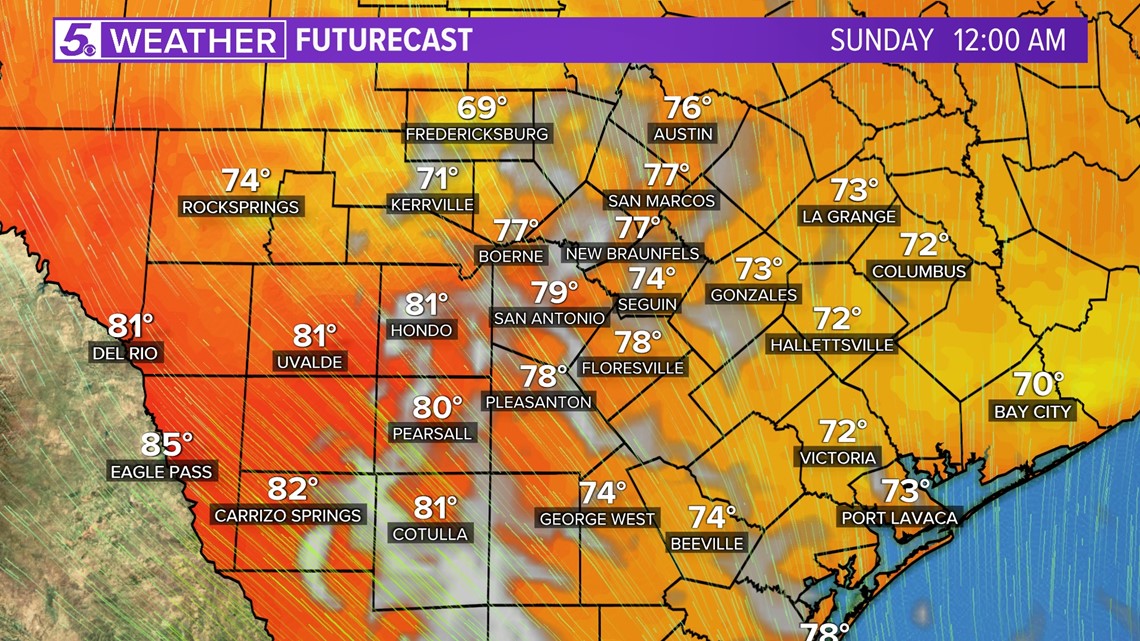
One forecast model indicates some clouds Sunday evening; however, the closer we get to maximum eclipse time around 11:11 p.m., the more clearing we expect to see.
Therefore, if you see clouds early, don't get discouraged, because the total lunar eclipse will continue until near midnight. In fact, you can continue watching the moon emerge from its shadow through early Monday morning around 1 a.m.

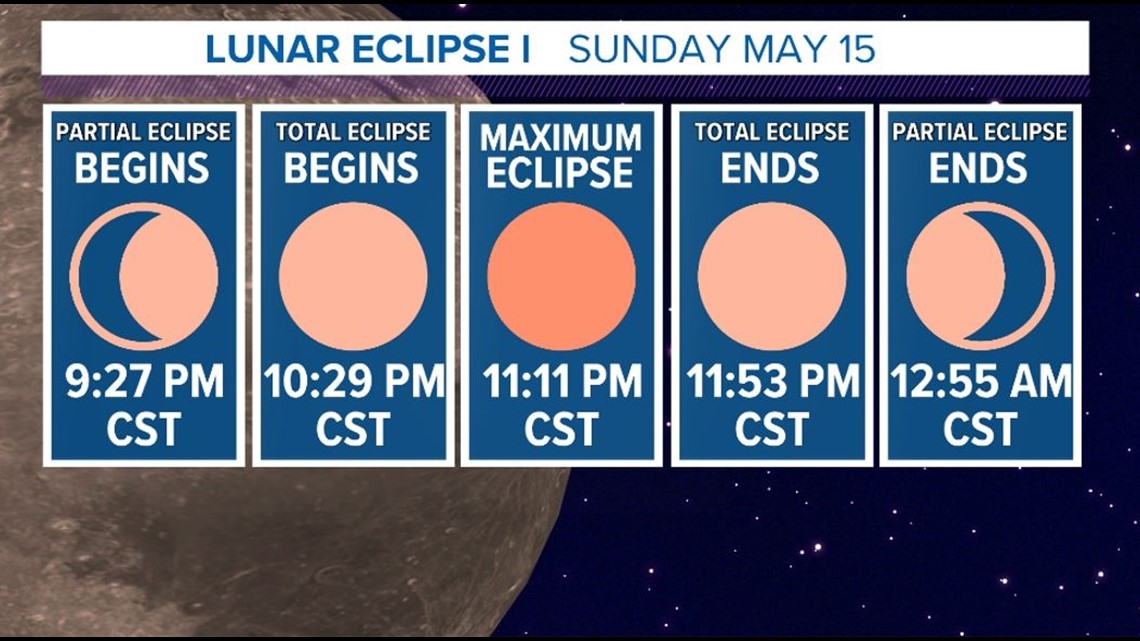
Why does the moon look reddish-orange?
During a full lunar eclipse, the Earth blocks sunlight from the moon, casting a shadow across the lunar surface. According to TimeandDate.com, at 9:27 p.m., the partial eclipse will begin leaving a crescent shape of the moon glowing. The total lunar eclipse begins at 10:29 p.m. Sunday, turning the moon reddish-orange until it ends at 11:53 p.m.
The color change is caused by longer wavelengths, like red, that are bent and refracted around the Earth's atmosphere. The red light reflecting off the moon's surface gives a red appearance, earning the name "blood moon." Other factors such as dust and other particles present in the Earth's atmosphere can also change the moon's appearance.
Do I need a telescope?
No, the lunar eclipse is visible to the naked eye. However, if you have binoculars or telescopes, you could see the event up close. Luckily for San Antonians, the San Antonio League of Sidewalk Astronomers (SALSA) is bringing their telescopes for the public to use Sunday night.
The local organization will hold a lunar eclipse watching party in the field next to the dog park area at McAllister Park beginning at 8 p.m., weather permitting. This will be a fun experience for the whole family where the group allows attendees to take turns looking through a telescope to see the moon up close.

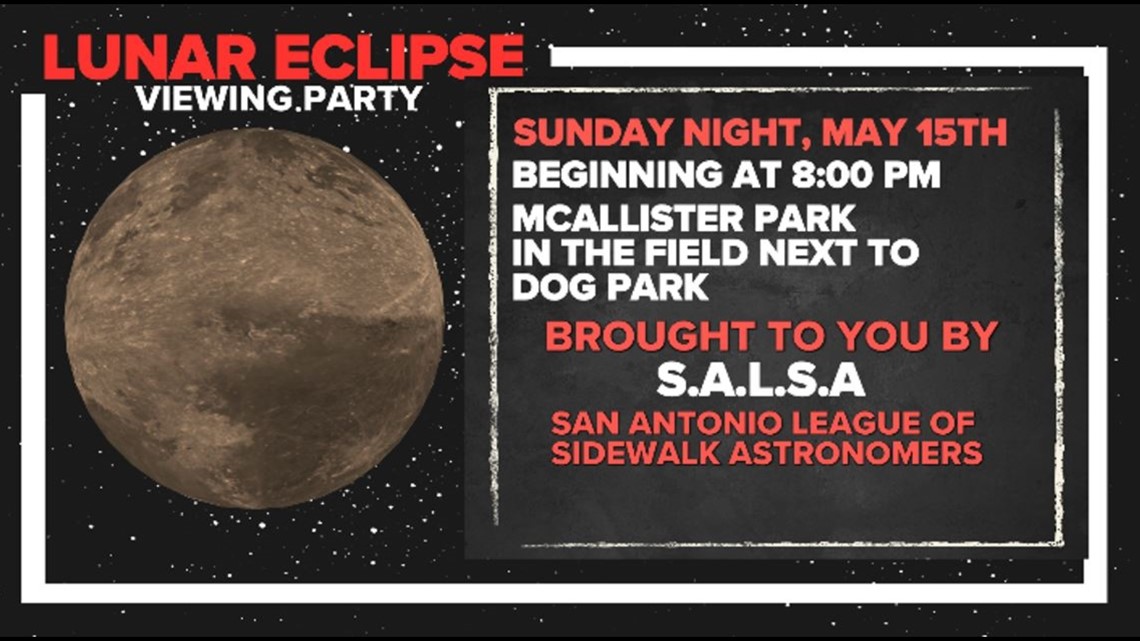
If you miss the this lunar eclipse, another chance will occur on Nov. 8, according to space.com.

